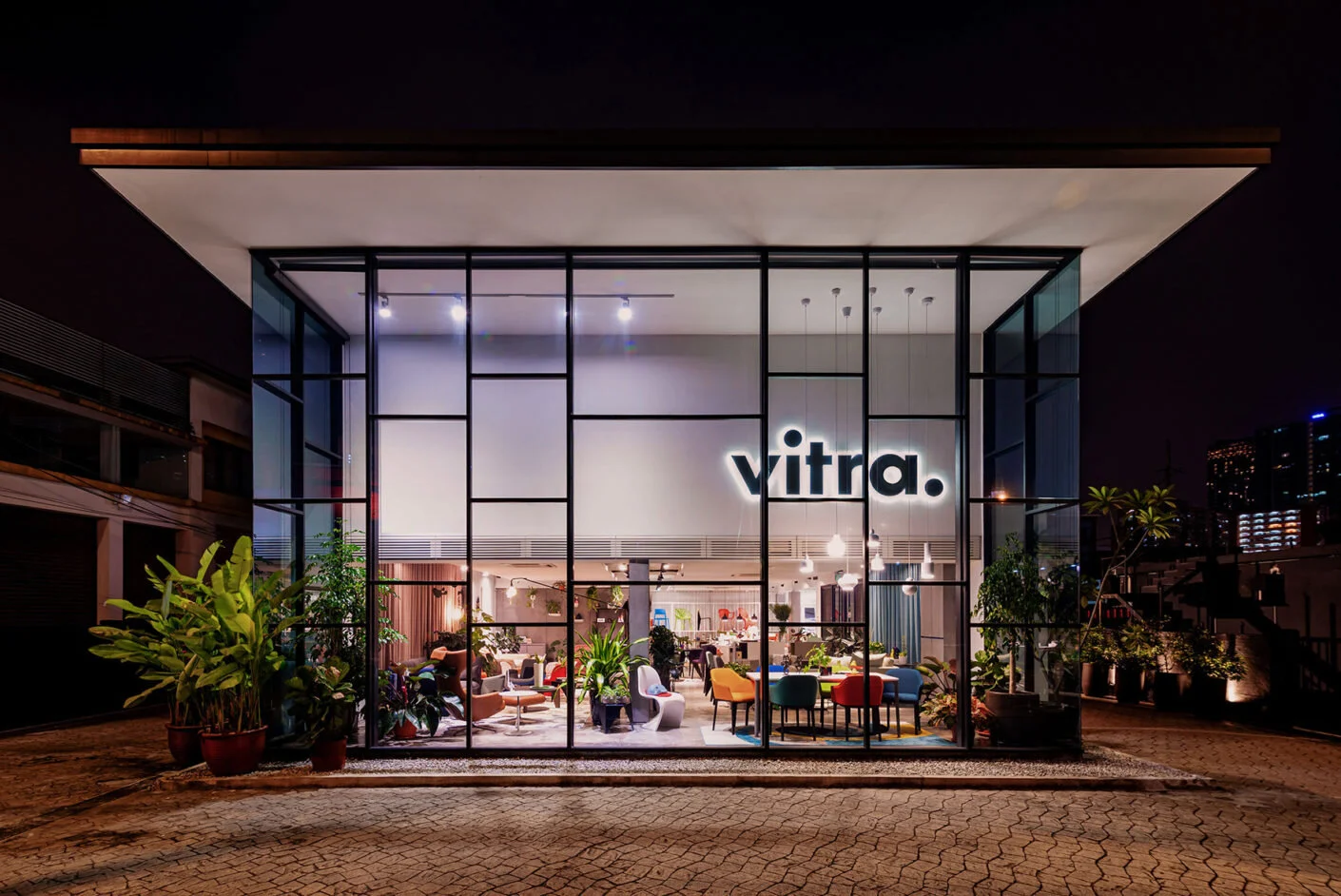Marcel Besau and Eva Marguerre with the side and coffee tables "Sediment" for favius.
Photo: Silke Zander
Working from premises on the ground floor of a charming old building in Hamburg’s Eimsbüttel district, Besau Maguerre kick off every new project with an internal workshop: The duo sit down with their three-strong team of architects and designers to play a kind of interdisciplinary ping-pong. This is followed up by moodboards with the help of their materials library, research on production methods 3D-sketches and first experiments in their own workshop. “It is always a shared journey,” explains Eva Marguerre. Color is an important factor in all of their projects. It assumes the role of telling stories, transporting an identity. “We are not primarily concerned with the effect but with finding the right color for the particular shape, and vice versa,” Marguerre continues. As with the color concept for the “214” coffee house chair by Thonet, which was produced in black, white, velvet red, and sage to mark the company’s 200th anniversary. By staining the connecting elements several shades lighter than the seat ring and legs a fascinating interplay of color arises and with it a modern interpretation of this classic product. The “Simetria” colored wall elements for Schönbuch which premiered at imm cologne 2020 also leave ample scope for a personal touch: Customers can choose from a large range of matt lacquers when it comes to the colors of the eight slim circular, semi-circular, rectangular or square cabinets. By contrast, Besau Maguerre chose many shades of white for their furniture series for the Elbphilharmonie concert hall, where the focus was on surfaces with a differing feel, ranging from steel via upholstery to marble. The design idiom is restrained and geometric. “A clear matter of reducing to the essentials,” the duo suggests.
Brand store concept for Vitra, Kuala Lumpur
And there is always a twist to their work – as with the unusual “MOA” baskets for kkaarrlls: With an unusually large diameter of 130 centimeters the baskets consist entirely of elastic thread in various colors and resin – making them both sturdy and lightweight. Besau Marguerre love experimentation yet this is not immediately apparent in their designs, which do not appear coarse or unfinished but are inherently consistent. “Plisago” for Fürstenberg is a hybrid made entirely of porcelain and featuring two stacked intertwining cones. The surface top is diamond-cut which ensures it is very sturdy. Given a pleated look and a matt glaze “Plisago” toys with what we are accustomed to seeing, the porcelain appears soft and fabric-like. “In this project we explored the boundaries of the material,” says Eva Marguerre. The next step was to translate “Plisago” into wall shelves; other projects with Fürstenberg are to follow.



